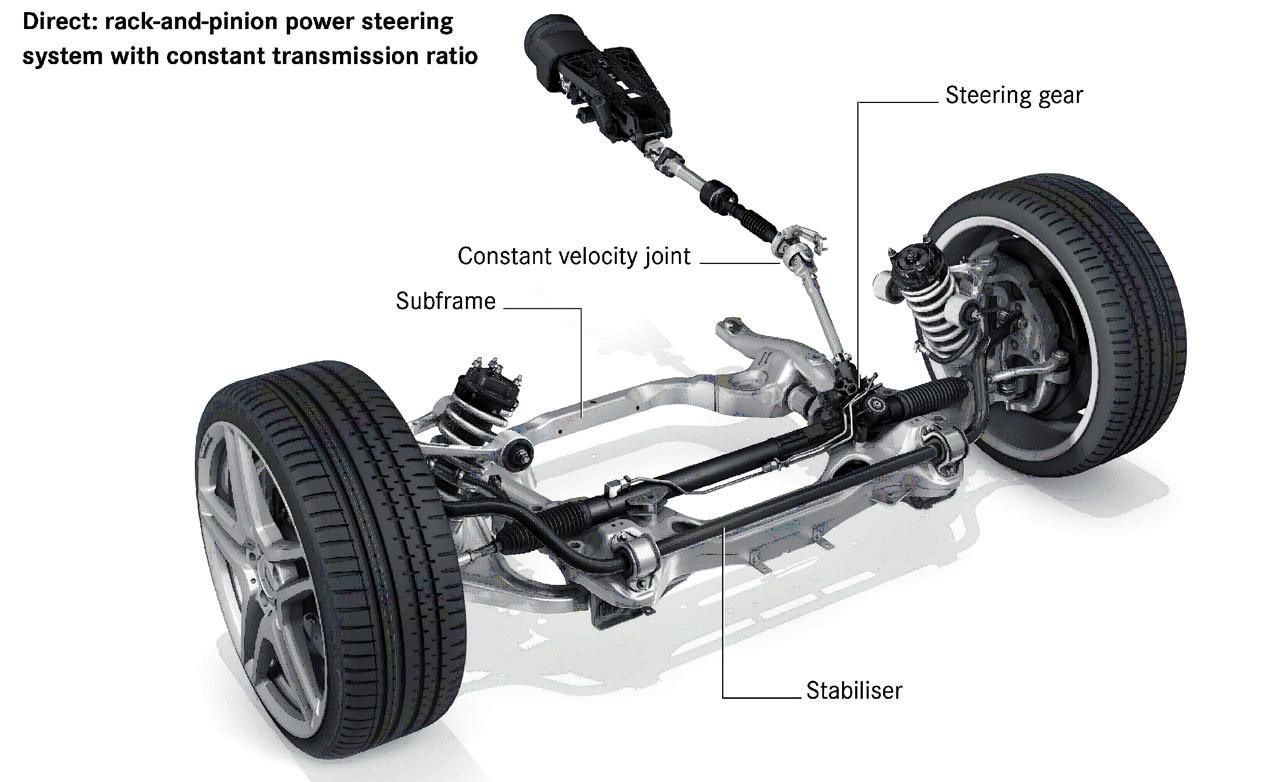Steering system allows the driver to control the direction of the vehicle by turning the front wheels. It is designed according to the use requirements of the vehicle and can be either in single or multi-axle design. Apart from its control over direction of travel, it also provides control of good maneuverability, smooth recovery from turns, and minimum transmission of road shocks. We have manual and power steering systems, and now power steering is standard equipment on nearly every vehicle. Manual steering’s only energy source comes from the force a drive applying to the steering wheel while on a power steered one the driver’s effort is assisted by other pressure from manmade device. Thus, power steering systems can be classified into hydraulic power steering and electronic power steering. Hydraulic power steering generates oil pressure in the pump with the engine’s output. Electric power steering eliminates the power steering pump, does away with fluid leaks and the need to check the power steering fluid. It has replaced hydraulic power steering in many new vehicles today. Concerning its designs, Power steering systems can be further divided into rack and pinion types and pitman arm. Amongst, the rack and pinion is probably the most common one you’ll find in any car today due to its relative simplicity and low cost. It gives a much better feel for the driver, and there isn’t the slop or slack associated with steering box pitman arm type systems. Usually, a basic steering system has 4 main parts-a steering wheel handling the steering operation, a steering column joining the steering wheel and the steering gears, the steering linkage connecting the steering box to the wheel assemblies at the front wheels and steering gears converting the steering torque and rotational deflection from the steering wheel and transmitting them to the wheel through the steering linkage to make the vehicle turn. Maintenance of the steering system consists of regular inspection, lubrication, and adjusting components to compensate for wear. Here are some procedures you can follow to maintain your steering system: checking and adjusting power steering fluid, the manufacturer has specified an optimum level of the power steering fluid you can consult; pressure testing a power steering system, always follow manufacturers or equipment manufacturers procedure when working on the system; flushing a power steering system; inspecting and adjusting an engine drive belt; servicing a steering system and servicing wheel bearings.
The MaxiCheck Pro SAS is specially designed to help you work on steering system.It can help you diagose all kinds of problems related to your car steering sytem. With this professinal diagnostic tool, the problems will display themselves before your eyes. If you want to learn about this product, please viste our HomeSite. Hope this article and our product can help you in dealing with your car steering problems.

Car Steering System
by
Tags:
